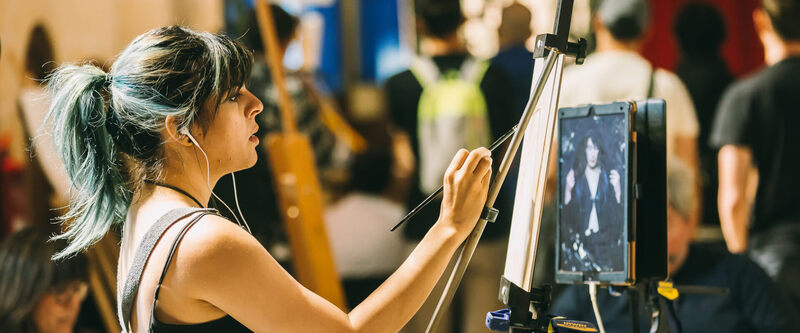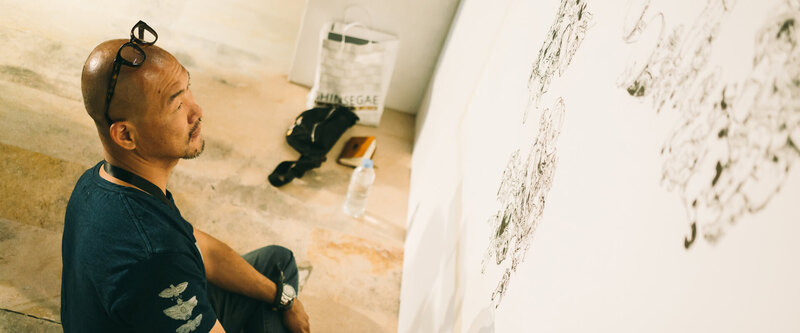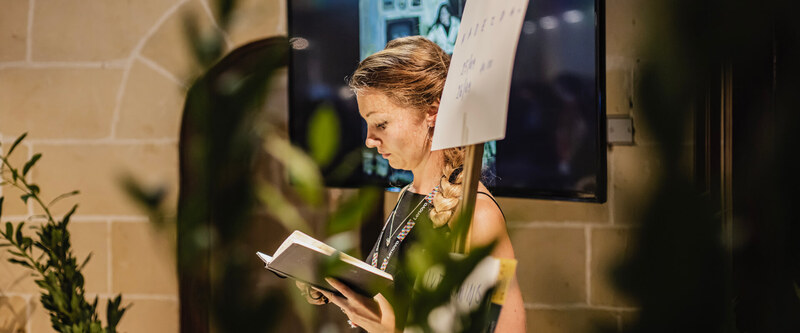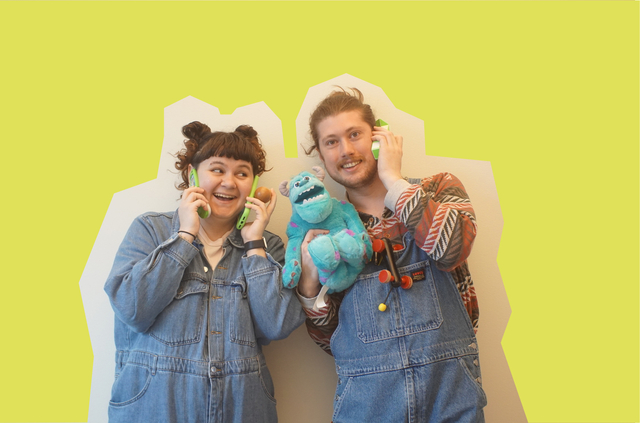Hello and welcome to yet another article where the good people here at THU call you out! There’s no other way to say it, so we’ll just tell you like it is: you may be sabotaging yourself. Yep, you read that right. Put a finger down if 1) you struggle to consider a project or art piece “ready” 2) you usually fall into an eternal loop of changes and improvements. Do you have two fingers down? Keep reading.
Subconsciously, as creators, we tend to use the concept of “ready or not” to avoid putting things out in the world. And by trying to avoid judgment and failure, what we’re really doing is preventing ourselves from fulfilling our potential. It’s self-sabotage disguised as perfectionism.
Is this something only young creators experience, or does it also happen to established creative legends? We talked to Karla Ortiz, Nadezda, and Kim Jung Gi to get their insights, as well as the finalists of Sony Talent League, who are currently working on bringing a project to life and preparing for their final pitch.
How do you know that what you’re creating is ready and it’s time to put the pen down?
Nadezda: It’s an intuitive decision, which comes at its own time. If a pie is considered “ready” in a certain amount of time described in the recipe; in creativity, there is no recipe, and each creation has its own timeline from latency to bloom. Sometimes it takes days or months to create a piece, sometimes only hours. Every time I start working on one – I remind myself I don’t know how long this journey is going to take, but if I start putting one foot in front of another, at some point I will turn around and see myself having trodden a whole new path, which in this case is a painting or a drawing. Each time I feel I am moving closer to completion, I take such thought with a grain of salt, because I don’t want to rely solely on my rational opinion for when the piece is “ready” but let my intuition and the painting tell me that in its own time. Such way of creating is a conversation. And when the time comes that we, both painting and I, agree – then it’s “ready”.
Karla Ortiz: Sometimes it’s as easy as “the deadline is now over, you need to send it to the client, otherwise, they will be very cross with you”. But let’s say there’s no deadline and you have ample time. I do have specific criteria in terms of the focal point being exactly at the level of finished that I want to take it. To me, this usually means a lot of attention to detail, a lot of rendering, and a lot of ensuring that everything is just right. And then, outside of the focal point, it’s not that everything needs to be super rendered, but at least the right shapes and the right value needs to be there. When my focal point is done, and all the areas in the painting have been touched upon or have been considered, I ask myself “can this painting be made better by working over it?” because there is a risk of overworking something.
Kim Jung Gi: First of all, when I am sure that all the images that I have built inside my head have been drawn on the paper. But still, it's always a struggle to know when the drawing is finished and I can finally put my pen down. I have been so used to filling in the blank spaces, I often think that it is equally difficult to know when to stop, to leave a certain void to it. It has always been hard to know when to stop, to find the right moment to stop, but nowadays I define my drawing as 'finished' when I have the feeling that I have managed to draw all the images I have planned out inside my head.
Clara Vior (STL Finalist): I don't think anything is ever "ready" to be honest… I feel like sometimes you just have to assume that you've done the best that you could and put the pen down. For STL in specific, the submitting process for me was literally the opposite to being ready, I think… it was more of a vague "why not?". As for showing our work to the mentors, I've always been of the opinion that if they are here to help us, we don't need to present them with a perfect product, and if we don't know how to do something and we're a bit lost, that's exactly where they enter. Acting as though you are on top of everything really doesn't get you anywhere, but being honest and vulnerable does.

Do you usually fall into the eternal loop of improvements and struggle to call a project “finished” and put things out in the world?
Kim Jung Gi: Every single time. Whenever I think the drawing is finished, I spot right away the parts that I find unsatisfying for myself. But a work will never be done when I correct everything whenever I see something not perfect. I just try to cut off my interest right away, and turn away from the drawing, rather heartlessly. I just leave that 'unsatisfying' part in my mind and think that I won't make the same mistake the next time when I work on a new piece.
Nadezda: There are many threads of intuitive, continuous improvement in my process, which don’t usually form a “loop”, but surely tangle up sometimes. When I get stuck and don’t know how to proceed, I simply put that piece aside and let it rest. While I pick up the work on another piece (there are always several paintings in progress in my studio), my subconscious helper is already solving the issues with that other painting I am stuck with. After a while, sometimes days or even months, when I approach it again – the solution seems to present itself. The “stuckness” could also be a sign of burnout and a sure thing to do then is to pause all creative activities and do something else – go outside, look at nature, read, garden, meet a friend. It is a signal that my subconscious, creative sources are depleted, and need to be refilled. I usually notice when such moments approach and make sure to take a break, otherwise the creative burnout can linger and nothing good or enjoyable will come out of trying to force creating despite of the exhaustion.
Karla Ortiz: When I have a lot of time, I usually give myself about a week in between paintings to go back to it and see how I feel. Because the day right after is still too close emotionally, and usually the day after I just think of it in terms of “oh, I should have fixed this, let me go and fix it” and it can make things worse. So I found that whenever there’s ample time, taking a week away from it gives me enough space to be surprised either positively or negatively. With time, you also start to look at your work more kindly. There are paintings from many years ago that I see now and I don't know why I was so angry or why I was so hard on myself. So time does give you a little more positivity in my opinion.
Paula Bonaval (STL finalist): Not at all! In fact, I’m more the kind of artist that is always looking at the big picture. I tend to get bored by small details quickly. The big picture has always been an appealing concept to me; whenever I think something is already outlined or “figured out” and all that’s left is the execution, I tend to want to move on to the next thing. If you work in a team it’s important to have detail-oriented people and outline-oriented people.

Did you ever have any situation where you felt like you were not ready?
Nadezda: I don’t think we are ever completely “ready” for what’s to come, but fortune favors the brave. Self-doubt is a common companion for many artists and it’s up to us to be stronger than that, rise to the challenge and do the best we can. Fear of failure is a stiffening force for creativity. It prevents us from chasing our dreams and realizing our full potential. In moments of doubt, I remind myself that a failure is an opportunity for improvement. There is nothing for sure in this life, all we can do is try fearlessly and to the best of our abilities at that given time. If we fail – it’s up to us to see it not as discouragement or defeat, but growth.
Kim Jung Gi: I hardly start a project with tons of preparation. This is the reason why I sometimes acknowledge my inadequacy and the lack of my knowledge when drawing. On the other hand, if there are lots of preparation and lots of references for your drawing, it could help but at the same time the preparation and the references become a sort of a guideline and it gets in the way of our own imagination. This is one of the reasons that I try not to depend on it too much. Sometimes the result of the final drawing is exactly what I've had in mind, sometimes not. As I said before, once the drawing is finished, I try not to linger on it too much. As soon as it's done, I try to get it off of my head. It helps me to move on to the next piece I have to work on.
Karla Ortiz: When it comes to opportunities, it’s so funny because we never quite feel ready for anything. Basically, you’ll never feel truly ready for some of the bigger opportunities that life has to give you. I certainly never felt quite ready for some of the bigger opportunities that life has given me. To this day there’s still this big hesitation of “I don’t know if I’m ready” but one of the things that have driven me is that I don’t want to regret something. So if I shy away from great opportunities because I'm scared, I know that in the future I’ll really regret it and that's not a life I want to lead. For me, regret is a bigger fear than the unknown.
Gracie and Elizabeth Dix (STL finalists): When we decided to apply for Sony Talent League, we very naively submitted believing there was no possible way we would be sitting where we are today. We adore our project and truly believe it will change kids’ relationship to learning but never dreamt we would have such enthusiastic support right off the bat.

What would you say to artists who have a hard time feeling like they are ready to go after certain opportunities or struggle to declare a project "done"?
Nadezda: Practice creative solitude. By that I mean, spend a lot of time alone in your creative space. Get to know yourself. Make it a daily practice to write, sketch, think, read, - and from that you will cultivate a strong sense of self. Develop your own opinions about art and creativity and embrace failure as a necessary companion for growth.
Karla Ortiz: I think it’s important for artists to have specific criteria of their own. Clearly identify what will make you happy in your work and occasionally expand it to what will challenge you, because that’s also important to continue to grow.
Kim Jung Gi: I think that people feel this way because we feel/know that we are 'not' perfect. Still, we want to be perfect, we want to be better at drawing. Also, I think comparing yourself with others plays a big role too. Of course, I had this same sensation but with time, naturally, it faded away. I just tried to agree and recognize that I can't be perfect right away. And I tried to please myself first, not the others. If you just continue to draw at ease, to please yourself, you'll be able to enjoy working as an artist for a very long time.
Jide Johnson (STL finalist): The time in your life is going to pass anyway. So as it passes you by, think about what you really want to do with it. Think about what's the worst thing that can happen. Even if you think you will fail, it's all about learning, not necessarily winning. I've learned some gems from being part of the STL. I'm not here to win, I'm here to grow and that's exactly what has happened.
Note from the author: Did I struggle to consider this article finished? YES. Thank god for deadlines and the incredible creators who generously took some time to share their thoughts and whose words inspired me to click the “publish” button on this thing. If you’re still reading this, reach out to joana.vale@trojan-unicorn so I can let my imposter syndrome know that there are actual people out there reading this. You’re entitled to a virtual hug, and we can trauma-bond over our mutual fear of failure - yay!


.jpeg)

